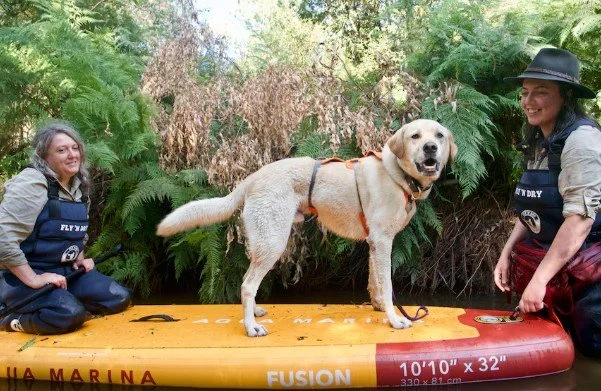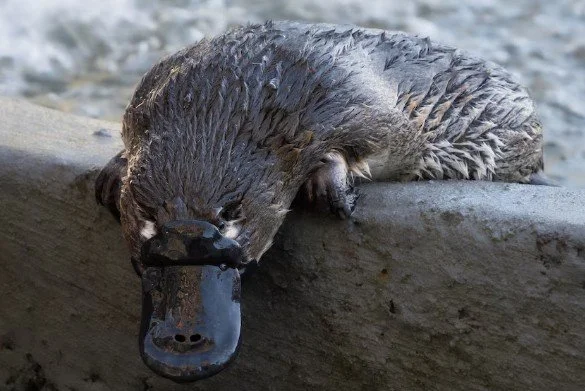Dogs on Paddleboards Join Platypus Conservation Team
Conservationists in southeastern Australia have figured out a non-intrusive way to monitor platypus in the wild. To navigate the waterways where the aquatic mammals live, they’ve trained paddleboard-riding dogs to sniff out the critters without disturbing them.
A labrador named Moss and a kelpie (Australian sheepdog) named Kip are the stealthy – and coordinated – working dogs at Healesville Sanctuary in Victoria. The platypus (Ornithorhynchus anatinus) is nocturnal and shy, so simply finding them in the wild has been challenging. In over 100 years of study, no one has ever seen a platypus lay an egg.
“It sounds quite basic but it's still a gap in our knowledge bank and I think one of the reasons that we don't know this stuff is that they have that reputation of being very cryptic,” platypus specialist Jessica Thomas tells ABC news.
The dogs and humans ride the paddleboards in the intricate creeks where the platypus live. When Kip or Moss pick up the scent, they will signal by sitting still, freezing in place, or lifting a paw. “And that’s when they get some tasty treats as a reward, and usually something else they really like,” says Thomas.
The Healesville scientists are trying to get an accurate head count of the mammals and to assess the conditions of their nesting sites. Occasionally they will fit a specimen with a radio collar for more consistent monitoring.
Both Moss and Kip started small in nearby Gippsland, where they were trained to find the critically endangered Baw Baw frog. From there they were taught to recognize the platypus odor by using scent-capturing polymer tubes at the sanctuary, where the tubes capture scents in platypus nests.
The platypus is listed as vulnerable in Victoria and endangered in South Australia. Habitat loss and illegal fishing practices are among the biggest threats to the species.
Watch the board riding dogs here. The sanctuary recently opened the Australian Platypus Conservation Centre, where animals are rehabbed before returning to the wild.
Photo credit: Rick Hammond / Zoos Victoria








